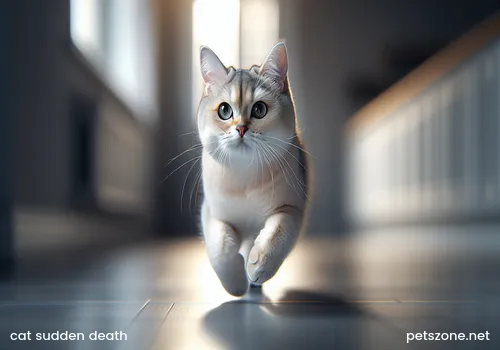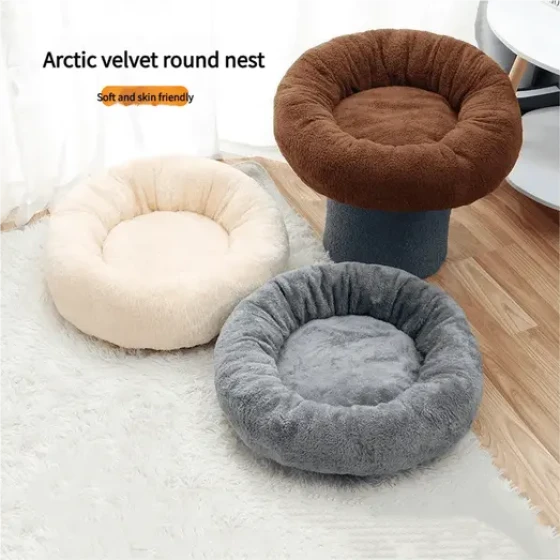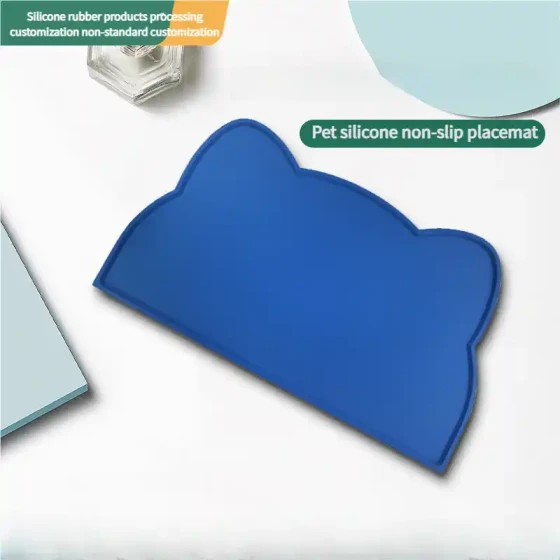Cat Sudden Death Posture Judging Cause of Death_Analyzing Cause of Death Skills from Cat’s Final Posture
Suddenly discovering that a cat has lost vital signs is a heavy blow for any cat owner. Sometimes, a cat’s departure is extremely sudden, even jumping around a second ago and collapsing the next. This situation is called "sudden death." Although we cannot change what has already happened, understanding some knowledge about cat sudden death and final postures may help us better comprehend and provide more timely assistance to other cats in the future.

Although a cat’s final posture cannot directly determine the cause of death with 100% certainty, combined with other possible symptoms and physical changes, it can sometimes provide some clues. Like Sherlock Holmes solving a case, every detail may point to the truth.
Common Causes of Cat Sudden Death
There are many causes of cat sudden death. Some diseases show no obvious symptoms in the early stages but can become life-threatening once triggered. Understanding these potential "hidden killers" is especially important for prevention.
- Cardiovascular disease: This is one of the most common causes of cat sudden death. Especially hypertrophic cardiomyopathy (HCM), where the cat’s ventricular wall abnormally thickens, affecting the heart’s pumping function, potentially leading to heart failure, thrombosis, or even sudden death. Certain breeds like Maine Coon, Ragdoll, British Shorthair, and American Shorthair have higher risks. Heart disease may have no warning signs and occurs suddenly.
- Thrombosis: Myocardial lesions may cause thrombosis. When a clot breaks loose, it blocks arterial vessels, often in the hind legs, causing sudden paralysis, severe pain, or even sudden death.
- Respiratory system issues: Severe respiratory diseases, such as asthma, can also lead to sudden death.
- Poisoning: Ingesting toxic plants, foods, or medications is a common cause of cat poisoning. Severe poisoning may cause seizures, coma, or death.
- Nervous system diseases: Some nervous system problems, such as cerebral infarction or status epilepticus, may cause sudden onset and death. Cerebral infarction is caused by obstruction of cerebral blood vessels, leading to brain cell necrosis. Epileptic seizures may present with convulsions and limb stiffness.
- Trauma: Cats active outdoors are more prone to trauma. Severe injuries may result in sudden death.
- Urinary tract obstruction: Complete urinary tract blockage leads to toxin accumulation in the body, which, if untreated, may cause death.
- Stress and anxiety: Extreme stress or fright may trigger latent disease episodes in cats, leading to sudden death.
Clues from Final Postures?
After death, a cat’s body undergoes changes, including muscle stiffness (rigor mortis). Thus, the posture at death may remain fixed for a time. Although the posture itself is hard to directly determine the cause of death, combined with other circumstances, it may provide some auxiliary information.
- Side lying or stretching: If the cat is found in a relaxed side-lying or stretched posture at death, it may indicate a relatively peaceful death process, such as gradual deterioration of heart failure. Cats often adopt side-lying sleeping positions when feeling safe and relaxed.
- Body stiffness or arched back: Sudden, abnormal stiffness, like arching the back or extending limbs, may relate to nervous system problems, severe pain, or convulsions. Poisoning or epileptic seizures can cause convulsions and stiffness. Extremely uncomfortable cats may also show stiffness, lying motionless on the ground.
- Curling up: Cats may curl their bodies to protect the abdomen or painful areas when in pain or discomfort. If a cat maintains a curled posture for a long time before death, it may indicate that it is experiencing pain.
- Open mouth breathing or abnormal mucous membrane color: Open-mouth breathing, rapid or difficult breathing, and discoloration of mucous membranes (such as gums turning purple or pale) before death strongly indicate severe respiratory or cardiovascular system issues.
- Eyes open: It is normal for the eyes to remain open after a pet passes away.
It must be emphasized that these posture analyses are only speculative and not absolutely accurate. Determining a cat’s cause of death requires combining more information, including pre-illness symptoms, medical history, age, breed, and environment. If conditions permit, a veterinary necropsy is the most reliable method to determine the cause of death.
Some Common Signs Before a Cat’s Final Moments
Before sudden death, some cats may show signs of impending death. Although not applicable in all cases, understanding these changes helps us better detect abnormalities in time.
- Behavior changes: Becoming unusually quiet, lethargic, or conversely restless and hiding, unwilling to interact. Cats may seek quiet places to hide before death.
- Changes in appetite and water intake: Significant decrease or complete cessation of eating and drinking, or abnormal increase or decrease in water consumption.
- Temperature changes: Body temperature may rise (fever) or fall (dropping near death).
- Respiratory changes: Abnormal breathing rate or depth, wheezing, or difficulty breathing.
- Gait or posture abnormalities: Unsteady walking, limping, unnatural standing or lying postures.
- Body discharges: Discharge around the eyes, vomiting, diarrhea, or other symptoms.
- Unusual sounds: Some cats may moan or howl during pain or near death.
- Body odor: Organ failure can cause toxin buildup, resulting in unpleasant body odor.
If any of these abnormalities are noticed, even minor changes, the cat should be taken to the veterinarian immediately. Early diagnosis and treatment are crucial for many diseases.
Common Questions
- Can the posture before cat sudden death determine the cause of death?
The posture after sudden death may provide some clues but cannot fully determine the cause. The cause needs to be diagnosed considering more information such as history and symptoms, preferably by a veterinarian. - Why are a cat’s eyes open after death?
Cats’ eyes usually remain open after death, which is normal because closing the eyes requires muscle control, and muscles relax after death, making closure impossible. - Does the cat’s body stiffen after death?
Yes, rigor mortis occurs, and the body gradually stiffens, usually beginning 2-6 hours after death, peaking within 12 hours, then softening again. - How to judge if a cat is really dead or in a coma?
Check breathing, heartbeat, pupil response, and body stiffness. If no breathing or heartbeat, no pupil reaction, and onset of stiffness, death is almost certain.
Final Words
Losing a pet is as heartbreaking as losing family. Although we cannot predict or prevent all accidents, understanding health risks cats may face, monitoring their daily behavior and physical changes, and regular checkups can help detect problems early and provide better care. This helps them stay with us for more beautiful moments. If unfortunate sudden death occurs, try to stay calm. If you want to determine the cause, consult a veterinarian about necropsy options. Also, give yourself time and space to grieve and heal.




